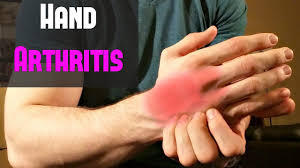Our hands are intricate marvels, allowing us to perform a multitude of tasks with precision and finesse. However, when arthritis takes hold, the very instruments that empower us can become a source of pain and discomfort. Hand arthritis is a common yet often misunderstood condition that can significantly impact daily life. In this comprehensive exploration, we’ll delve into the world of hand arthritis, unraveling its intricacies, symptoms, causes, and strategies for managing this challenging condition.
Understanding Hand Arthritis
Arthritis, in general, refers to inflammation of the joints, and hand arthritis specifically affects the joints in the hands and fingers. It is a progressive condition that can affect people of all ages, though it is more prevalent in older adults.
Types of Hand Arthritis
- Osteoarthritis: This is the most common form of arthritis and is often associated with aging. Osteoarthritis occurs when the protective cartilage that cushions the ends of bones wears down over time, leading to pain, swelling, and reduced joint mobility.
- Rheumatoid Arthritis: Unlike osteoarthritis, rheumatoid arthritis is an autoimmune disorder that causes the immune system to attack the synovium—the lining of the membranes that surround the joints. This results in inflammation that can eventually damage the joint and surrounding tissues.
- Psoriatic Arthritis: This type of arthritis is associated with the skin condition psoriasis. It can affect any joint in the body, including the hands, and may cause swelling, pain, and stiffness.
Symptoms of Hand Arthritis
The symptoms of hand arthritis can vary depending on the type and severity of the condition. Common symptoms include:
- Pain: Persistent or intermittent pain in the fingers, hand joints, or wrists, often exacerbated by movement.
- Stiffness: Reduced range of motion and stiffness, particularly in the morning or after periods of inactivity.
- Swelling: Inflammation of the joints, leading to visible swelling and tenderness.
- Deformities: Over time, hand arthritis can cause deformities such as knobby finger joints, a classic sign of osteoarthritis.
- Weakness: Weakening of grip strength and difficulties in performing everyday tasks that require manual dexterity.
Causes of Hand Arthritis
The exact cause of hand arthritis can vary depending on the type. Common factors contributing to the development of hand arthritis include:
- Age: Osteoarthritis, the most common form of hand arthritis, is often associated with the wear and tear that comes with aging.
- Genetics: A family history of arthritis may increase the risk of developing the condition.
- Joint injuries: Previous injuries to the hand or fingers, such as fractures or dislocations, can increase the likelihood of arthritis.
- Autoimmune factors: Rheumatoid arthritis and psoriatic arthritis have autoimmune components, where the body’s immune system mistakenly attacks its own tissues.
- Gender: Some types of arthritis, such as rheumatoid arthritis, are more common in women.
Management and Treatment
While there is no cure for hand arthritis, various management strategies can help alleviate symptoms and improve the quality of life for individuals affected by this condition.
- Medications: Nonsteroidal anti-inflammatory drugs (NSAIDs) can help reduce pain and inflammation. Disease-modifying antirheumatic drugs (DMARDs) may be prescribed for autoimmune forms of arthritis.
- Physical Therapy: Targeted exercises and stretches can help maintain joint flexibility and strength. A physical therapist can customize a program to suit individual needs.
- Splints and Braces: Wearing splints or braces can provide support to the affected joints, reducing pain and preventing further deformities.
- Lifestyle Modifications: Simple adjustments in daily activities can make a significant difference. This may include using assistive devices, modifying workspaces, and incorporating joint-friendly tools.
- Heat and Cold Therapy: Applying heat or cold to affected joints can help alleviate pain and reduce inflammation. Warm compresses or paraffin wax baths can be soothing, while ice packs may help with swelling.
- Weight Management: Maintaining a healthy weight is crucial, as excess weight can exacerbate arthritis symptoms. Losing weight, if necessary, can help reduce stress on the joints.
- Injections: Corticosteroid injections can provide temporary relief by reducing inflammation in the affected joints. Hyaluronic acid injections may also be used to improve joint lubrication.
Surgical Options
In severe cases where conservative measures prove insufficient, surgical interventions may be considered. Common surgical options for hand arthritis include:
- Joint Fusion (Arthrodesis): This procedure involves fusing the bones of the affected joint to reduce pain and improve stability.
- Joint Replacement (Arthroplasty): In cases of advanced arthritis, joint replacement surgery may be recommended. This involves removing the damaged joint and replacing it with an artificial joint (prosthesis).
- Tendon Repair: Arthritis can cause damage to the tendons, and surgical procedures may be required to repair or reconstruct these structures.
Embracing a Holistic Approach
Living with hand arthritis involves more than just managing physical symptoms. Emotional well-being is equally important. Support groups, counseling, and educational resources can help individuals cope with the challenges and uncertainties that arthritis brings.
- Support Groups: Connecting with others facing similar challenges can provide a sense of community and understanding. Many local and online support groups cater to individuals with arthritis.
- Counseling: Dealing with chronic pain and the impact on daily life can be emotionally challenging. Counseling or therapy can offer valuable coping strategies and emotional support.
- Educational Resources: Understanding the condition and staying informed about the latest developments in arthritis research can empower individuals to make informed decisions about their health.
Conclusion
Hand arthritis is a multifaceted condition that requires a comprehensive approach to management. From understanding its various forms and causes to implementing lifestyle modifications, medications, and, in some cases, surgical interventions, managing hand arthritis involves a combination of strategies tailored to individual needs. By embracing a holistic approach that addresses both the physical and emotional aspects of the condition, individuals can work towards maintaining an active and fulfilling life despite the challenges posed by arthritis.



